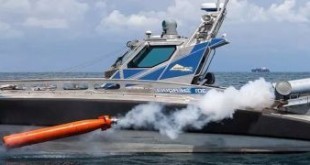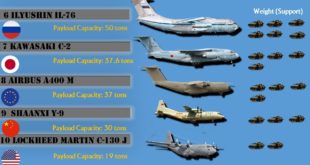In recent years, the Indian Ocean has emerged as a critical theater of geopolitical competition, with China’s expanding naval presence posing significant challenges to India’s strategic interests. In response, India has embarked on a multifaceted strategy to enhance its naval capabilities and forge key collaborations aimed at countering the growing Chinese threat in the region. This blog delves into the various measures India is undertaking to bolster its maritime strength and secure its dominance in the Indian Ocean.
The Indian Ocean Region (IOR), encompassing the territories of 22 member nations of the Indian Ocean Rim Association (IORA) along with key countries like Myanmar, Pakistan, and Djibouti, is of immense strategic importance. The escalating presence of the Chinese People’s Liberation Army Navy (PLAN) in these waters poses significant challenges to regional stability and security, especially for India. To counter this growing threat, India is significantly enhancing its naval capabilities and fostering international collaborations.

The Chinese Naval Threat
The PLAN, now the largest navy globally by the number of commissioned warships, has been rapidly expanding its oceanic deployments and amphibious capabilities. Key developments include the commissioning of advanced warships such as amphibious assault ships, guided missile cruisers, and nuclear-powered ballistic missile submarines.
China maintains a constant presence of at least seven to eight navy ships in the Indian Ocean. Since establishing its first overseas military base in Djibouti in 2017, China has continued to develop other ports from Tanzania to Indonesia under the Belt and Road Initiative. The PLAN’s regular deployment of submarines, including the advanced Type 039A Yuan class and nuclear attack submarines, signifies Beijing’s intent to assert its influence and compete for regional dominance.
The Indian Ocean’s strategic importance cannot be overstated, particularly for China, which relies heavily on its sea lanes for importing energy from the Middle East and Africa. The presence of Chinese nuclear attack submarines in the region poses a significant threat to India’s security and regional stability. These submarines, with their unlimited operational range, can remain submerged for extended periods, making them difficult to detect and track.
India has responded to the perceived threat by maintaining a fleet of 50 combat-ready warships for round-the-clock surveillance in the Indian Ocean. The Indian Defense Ministry has repeatedly warned of the “grave threat” posed by the Chinese navy, emphasizing China’s efforts to expand its patrols and control critical sea lanes. India’s vigilant monitoring aims to counterbalance China’s strategic maneuvers and ensure the security of its maritime interests.
China’s Strategic Partnerships and Regional Influence
China’s growing security partnerships with India’s neighbors, such as Pakistan, Myanmar, Bangladesh, Sri Lanka, and the Maldives, further exacerbate India’s security concerns. The acquisition of ports and naval facilities in these countries allows China to project its power more effectively into the IOR. The $46 billion China-Pakistan Economic Corridor (CPEC) and the development of Gwadar port are particularly noteworthy, providing China with critical access to the Indian Ocean.
China’s strategic partnerships and military expansion in the Indian Ocean region have raised significant concerns among Indian analysts and regional experts. Beijing has been actively engaging with India’s neighbors, including Pakistan, Myanmar, Bangladesh, Sri Lanka, and the Maldives, to establish a robust security presence. Notably, China has acquired strategic ports in these countries and developed docking rights in Seychelles. The China-Pakistan Economic Corridor (CPEC), centered around Gwadar port, and the naval base in Djibouti enhance China’s operational reach, enabling the People’s Liberation Army Navy (PLAN) to maintain a substantial presence in the Indian Ocean. This network of ports and facilities positions China to counter India’s influence in the region, prompting India to enhance its naval capabilities and strategic partnerships.
China’s approach in the Indian Ocean Region (IOR) is multifaceted, combining diplomatic ties with coastal countries and infrastructure development assistance under the Belt and Road Initiative. This strategy not only strengthens Beijing’s regional influence but also secures vital sea lanes for its energy imports. The PLAN’s increased access to regional infrastructure, including potential port facilities in Djibouti, exemplifies its long-term commitment to maintaining a significant and permanent naval presence in the Indian Ocean.
India Response
In response, India has taken significant steps to bolster its maritime security and defense alliances. India has strengthened its strategic ties with the United States and other Quad members (Japan and Australia) through joint naval exercises and security agreements, such as the Logistics Exchange Memorandum of Agreement. These collaborations enhance India’s maritime domain awareness and operational reach, allowing access to U.S. bases in Djibouti and Diego Garcia. Additionally, India’s leasing of an Akula-class SSN from Russia and participation in international maritime exercises, such as IBSAMAR with Brazil and South Africa, underscore its commitment to maintaining regional stability and countering China’s growing influence in the Indian Ocean.
India is poised to bolster its naval capabilities in response to increasing Chinese maritime influence, as evidenced by the upcoming release of its first-ever unclassified “Unmanned Roadmap” at the ‘Swavlamban 2022’ conclave in New Delhi. Vice Admiral SN Ghormade, Vice Chief of Naval Staff, announced the roadmap’s unveiling, highlighting its critical role in outlining the Indian Navy’s urgent need for underwater vehicles. This initiative aims to provide insights to the private sector regarding the navy’s requirements amidst growing regional challenges. Additionally, the navy is advancing plans to integrate unmanned aerial vehicles across various platforms, including aircraft carriers, fighter jets, and helicopters, while exploring the potential of large fixed-wing Unmanned Aerial Systems for future operations, including airborne early warning, strike missions, and air-to-air refueling. These developments underscore India’s proactive strategy to enhance its naval capabilities in response to strategic threats in the maritime domain.
Indian Navy Sets Ambitious Goal for Aatmanirbhar Bharat
In a resolute declaration of India’s commitment to self-reliance in defence, Admiral R Hari Kumar, Chief of Naval Staff, announced the Indian Navy’s ambitious goal of achieving complete “aatmanirbharta” (self-reliance) by 2047. Admiral Kumar emphasized the crucial role of industry collaboration in realizing this vision. “Self-reliance means manufacturing every ship, submarine, aircraft, and weapon system in India,” he stated, underscoring the comprehensive nature of the Navy’s aspiration. Minister of State for Defence, Ajay Bhatt, was also present at the event, highlighting the government’s support for indigenous defense production.
Detailing the progress made towards self-reliance in various defence sectors, Admiral Kumar outlined the current levels of indigenous capability. He noted significant strides in the “float” component, with approximately 95 percent self-reliance achieved, while efforts continue to enhance capabilities in the “move” and “fight” components, standing at 65 percent and 55 percent self-reliance, respectively. Admiral Kumar stressed that indigenous defence production is essential for the country’s strategic autonomy, not just an economic imperative. He emphasized the importance of manufacturing critical components such as weapons, weapon systems, sensors, radars, and missile launchers within India to bolster national security.
Highlighting the Indian Navy’s support for MSMEs, Admiral Kumar commended Nibe Ltd for its contributions, particularly in manufacturing Brahmos launchers for ships. He also mentioned the Naval Innovation and Indigenisation Organisation’s initiatives in fostering indigenous technological solutions through platforms like webinars to address the Navy’s evolving requirements.
Enhancing Maritime Security Operations
To address non-traditional security threats and ensure the safety of maritime trade routes, India has intensified its maritime security operations. Anti-piracy patrols, humanitarian assistance, and disaster relief missions are integral components of India’s naval strategy. These operations not only safeguard India’s maritime interests but also contribute to regional stability and bolster India’s image as a responsible maritime power.
The Indian Navy’s proactive engagement in capacity-building initiatives with smaller Indian Ocean nations further underscores its commitment to regional security. Training programs, joint exercises, and the provision of maritime equipment enhance the capabilities of these nations, fostering a collaborative approach to countering common challenges.
Strengthening Naval Assets and Infrastructure
India’s naval modernization program is at the forefront of its strategy to counter Chinese influence in the Indian Ocean. The Indian Navy has significantly ramped up its fleet, focusing on acquiring state-of-the-art warships, submarines, and aircraft. The commissioning of the indigenously built aircraft carrier INS Vikrant, along with the development of advanced stealth frigates and nuclear-powered submarines, underscores India’s commitment to enhancing its blue-water capabilities.
Expanding Surveillance and Intelligence Capabilities
Effective surveillance and intelligence gathering are crucial for maintaining maritime dominance. India has invested in expanding its maritime domain awareness (MDA) capabilities through the deployment of advanced surveillance aircraft, drones, and satellite systems. The induction of platforms like the P-8I Poseidon aircraft and Sea Guardian drones has significantly enhanced India’s ability to monitor Chinese naval movements and secure critical sea lanes.
India’s collaboration with international partners extends to the realm of intelligence sharing. Agreements with countries like the United States and Japan facilitate the exchange of real-time information on Chinese naval activities, enabling India to respond swiftly to potential threats. The establishment of the Information Fusion Centre for the Indian Ocean Region (IFC-IOR) further strengthens India’s MDA by fostering cooperation and information sharing among regional stakeholders.
Fleet Expansion and Modernization
India’s defense ministry approved a $5.6 billion project in 2019 to build six advanced submarines under a strategic partnership model. The Indian Navy is also set to strengthen its fleet with 56 new ships and submarines over the next decade, including fleet ships, submarines, and mine sweepers. The construction of the INS Vishakhapatnam-class destroyers and the acquisition of advanced Talwar-class frigates from Russia are key components of this expansion.
Enhancing Anti-Submarine Warfare Capabilities
The Indian Navy is significantly enhancing its anti-submarine warfare capabilities with the acquisition of 24 Sikorsky MH-60R helicopters, replacing its aging Sea King ASW fleet by 2024. These helicopters will be equipped with advanced systems tailored for Indian military needs, including the AN/AQS-22 Airborne Low-Frequency Sonar (ALFS) and AN/APS-153(V) multi-mode radar. Additionally, India continues to leverage its Boeing P-8I maritime patrol aircraft, equipped with Harpoon Block-II missiles and MK-54 lightweight torpedoes, to monitor Chinese submarine activities in the Indian Ocean and Arabian Sea. The P-8Is play a crucial role in India’s naval strategy, offering both surveillance capabilities and a deterrent presence.
Technological Advancements and Indigenous Development
India is also focusing on technological advancements and indigenous development to enhance its naval capabilities. The unveiling of the ‘Unmanned Roadmap’ aims to integrate unmanned aerial and underwater vehicles into the navy’s operations. The commissioning of INS Kavaratti, an indigenously built ASW stealth corvette, reflects India’s commitment to self-reliance in defense manufacturing.
Strategic Collaborations and Partnerships
Recognizing the importance of collaborative efforts in maintaining regional stability, India has strengthened its naval partnerships with key allies. The Quadrilateral Security Dialogue (Quad), comprising India, the United States, Japan, and Australia, has gained prominence as a platform for joint maritime exercises and strategic cooperation. Exercises like the Malabar series not only enhance interoperability among the navies but also send a strong message of collective resolve to uphold a free and open Indo-Pacific.
India has also deepened its bilateral naval ties with countries like France, the United Kingdom, and Russia. These collaborations encompass joint exercises, technology transfers, and intelligence sharing, contributing to India’s maritime security and operational readiness. Furthermore, India’s engagement with Southeast Asian nations, such as Indonesia and Vietnam, reflects its commitment to building a regional coalition to counterbalance Chinese assertiveness.
Malabar Exercises
The navies of the US and India have been conducting the Malabar exercise in the Indian Ocean since 1992, with Japan joining as a permanent participant in 2007, alternating the location between the West Pacific and the Indian Ocean. In 2018, Malabar was held off the coast of Guam from June 7 through June 16, marking the first time it was conducted in this operational area. The exercise focused on achieving maritime interoperability, emphasizing high-end warfighting skills, maritime superiority, and power projection, with phases both ashore in Guam and underway in the Philippine Sea. According to a US official, these engagements are seen as foundational for a lasting Navy-to-Navy relationship, particularly in developing shared anti-submarine warfare (ASW) capabilities.
In June 2021, India and the US launched a two-day multi-domain wargame in the Indian Ocean to further consolidate their operational synergy amid China’s growing military presence in the region. The US deployed a carrier strike group led by the USS Ronald Reagan, along with F-18 fighter jets and E-2C Hawkeye aircraft. India participated with assets including Jaguar and Sukhoi-30MKI fighter jets, IL-78 tanker aircraft, AWACS, and warships Kochi and Teg. The Indian Navy also deployed P8I maritime surveillance aircraft and MiG 29K jets. This carrier battle group, comprising destroyers, frigates, and other ships, aimed to demonstrate comprehensive integration and coordination in maritime operations. High-tempo exercises included advanced air-defense drills, cross-deck helicopter operations, and anti-submarine maneuvers, all designed to enhance warfighting skills and interoperability between the two navies.
Broader Collaborative Framework
The collaboration extends to the Quad alliance, which includes the United States, India, Japan, and Australia. In June 2020, India and Australia signed the Mutual Logistics Support Arrangement and the Defence Science and Technology Implementing Arrangement, facilitating the use of each other’s bases for repair and supply, thereby strengthening overall defense cooperation. This partnership enables Australia and India to use their submarines to monitor and potentially block Chinese naval movements in the Indian Ocean and the South China Sea. Such strategic maneuvers highlight the Quad’s commitment to maintaining a balance of power in the Indo-Pacific region and countering China’s growing maritime influence. From India’s perspective, its expanding naval relationships within the Quad serve as a crucial strategy to balance China’s presence and delay its dominance in the Indian Ocean, while Beijing tacitly acknowledges the US’s predominant role in the region.
India-Australia Naval Cooperation:
- Exercise Details: Two-day exercise in the Indian Ocean involving complex naval maneuvers, anti-aircraft drills, and helicopter operations.
- Agreements: Mutual Logistics Support Agreement and Defence Science and Technology Implementing Arrangement signed in June 2020.
- Strategic Use: Both countries can use each other’s bases for repair, replenishment, and potentially block Chinese navy movements in conflict scenarios.
India-Vietnam Military Cooperation
India and Vietnam have recently signed an agreement allowing both nations to use each other’s military bases for the maintenance and supply of ships and aircraft, marking a significant enhancement in their defense cooperation. This agreement enables Vietnam to access advanced Indian military technology while providing India with strategic access to the Pacific Ocean, aligning with its broader ambitions of becoming a global power. Historically, Vietnam has relied on India for military support, and despite some setbacks in India’s military technology, it remains more advanced than Vietnam’s. This collaboration underscores India’s robust military industrial system, enabling Vietnam to modernize its forces by importing necessary military equipment and technologies from India.
Implications for Regional Geopolitics
US Role in FOIP:
- Impact: US involvement in the Free and Open Indo-Pacific (FOIP) changes ocean geopolitics, countering Chinese submarine patrols in the Indian Ocean.
India’s Naval Strategy:
- Perspective: Strengthening naval relationships with the US, Japan, and Australia aims to balance China’s naval presence.
- China’s Response: Currently, China implicitly accepts US predominance in the Indian Ocean, reflecting either strategic judgment or recognition of US naval superiority.
Conclusion
The strategic importance of the Indian Ocean Region cannot be overstated. As China continues to expand its naval capabilities and influence in the region, India must remain vigilant and proactive.
As China’s naval footprint continues to grow in the Indian Ocean, India is steadfastly enhancing its naval capabilities and forging strategic collaborations to safeguard its maritime interests. Through a combination of modernizing its fleet, expanding surveillance capabilities, and strengthening partnerships, India aims to counterbalance Chinese influence and ensure the stability and security of the Indian Ocean region. The road ahead demands sustained efforts and a vigilant approach, but with its comprehensive strategy, India is well-positioned to navigate the evolving geopolitical landscape and assert its dominance in the Indian Ocean.
References and Resources also include
- http://www.voanews.com/content/india-concerned-about-chinese-subs-in-sri-lankan-ports-/2509079.html
- http://in.reuters.com/article/india-usa-submarines-idINKCN0XT059
- http://indianexpress.com/article/india/india-news-india/pla-submarines-in-indian-ocean-legitimate-china/
- http://www.indiandefensenews.in/2017/01/chinese-nuclear-submarine-seen-at.html
- http://www.indiandefensenews.in/2017/01/chinese-nuclear-submarine-seen-at.html
- https://economictimes.indiatimes.com/news/defence/navy-to-soon-get-latest-sonar-systems-for-anti-sub-warfare/articleshow/47473138.cms
- https://www.naval-technology.com/features/india-vs-china-indian-and-chinese-pla-navies-compared/
- https://www.defenceview.in/masterstroke-of-india-against-china-india-can-now-deploy-warships-in-vietnam/
- https://theprint.in/world/india-should-increase-naval-capabilities-to-counter-chinese-threat-in-indian-ocean-expert/962116/
 International Defense Security & Technology Your trusted Source for News, Research and Analysis
International Defense Security & Technology Your trusted Source for News, Research and Analysis



